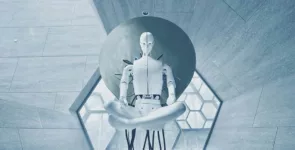We tend to form rigid views of people and companies. We meet someone as a child and that initial impression can stay with us even after the person has had a career, kids and is still a little like the child we remember. With companies, we can even become more rigid because we form our impression around the products and services we initially use, not the capabilities of the company that evolve over time. Most folks I talk to, for instance, still think of BlackBerry as a smartphone company even though it left that business over a decade ago and is now one of the leading pure play security companies.
NVIDIA’s change is even more pronounced (it is worth watching the GTC Keynote). It has been decades in the making. Most of us likely think of NVIDIA as a company that makes gaming graphics cards because that’s what we bought from it, but NVIDIA has just emerged as the top AI Factory in the world and the leading creator of AI Factories. I should point out that NVIDIA’s CEO used the word “Foundry” rather than factory, but given what Foundry actually is, I don’t think that is the correct term. I think more people know what a factory is than what a foundry is. Let me know if you think I’m wrong.
AIs vs. Computers vs. Robots
Think of AIs like we think of minds, and you’ll get what I’m talking about. NVIDIA isn’t a computer factory or a robotics factory. With Blackwell GPU and the Hopper CPU hardware, software, and Omniverse solutions, it has created a process and equipment to create computer minds. We call them artificial intelligences, which I still believe is a bad term because I think intelligence is binary. A thing is or is not intelligent.
Most robots today are blind and stupid. They can only do what they are programmed to do and, should they run into a problem, a human must step in and correct it. But the robots being created with AIs can increasingly see and interpret their environment to correct or avoid problems. For example, they showcased a robotic arm doing assembly. In a traditional implementation, if a human accidentally put their arm in the way of the robot, it would either function as if the human arm weren’t there causing injury or trigger a sensor that would stop the arm preventing injury. With an AI, the robotic arm moves around the human without doing harm or stopping the process it was trying to complete.
Computers can automate and simplify actions today. I’m writing this with a traditional PC, and it is showcasing where I’m making errors so I can improve my result, but I still must, even with predictive typing, type most of the column. With AI, I could just give the AI an outline and it would draft the paper without making the mistakes I made while using my same style which it would have learned from my previous writing, and potentially (if I direct it properly which is a new required skill set) creating a far faster, higher-quality result. Computers and robots respond to specific commands. AI generates content from far simpler directions the user provides and can even potentially anticipate a user’s needs and do tasks autonomously. In other words, they are game changers.
Why Do You Need an AI Factory?
LLMs (Large Language Models) can do a lot of things, but they are extremely expensive to create, incredibly large, and tend to have a great deal of interpretive latency based on location, hardware and the nature of the task. SLMs (Small Language Models) are generated from LLMs for specific tasks. They are faster and can run locally thus reducing processing and power costs, all while improving response, but you need several of them to complete complex tasks. As a result, there will be comparatively few LLMs and a vast number of SLMs as we go forward to creating a process, hardware, training mechanism, and security result for AI manufacturing in the future.
What NVIDIA announced at GTC wasn’t just its own ability to manufacture AIs, but the ability for companies to buy AI factories from it that will turn out fully functional AIs. I think this will change the very nature of personal computers because, at some point, I think we will evolve our own personal needs for computing to be AI factories as well. (It is interesting to note that while NVIDIA did embrace the concept of AI PCs at the event, it positioned the Apple Vision Pro as the potential Adam to a future generation of personal AI factories that could replace our PCs and smartphones in the future. Apple has a unique opportunity here if it chooses to seize it.
Wrapping Up: A Windows 95, Netscape Navigator World-Changing Event
GTC, NVIDIA’s AI show (which really should have a different name now), was an event reminiscent of the launch of Windows 95 and Netscape Navigator in that it will change the world. While Microsoft’s Copilot was the beginning of the AI change at scale, NVIDIA’s announced technologies, software, processes, training platform (Omniverse) and systems represent a fundamental change not only to what we do our processing on but the way we interface with computers as we move from GUI’s, mice and keyboards or computer interfaces to natural language or human interfaces.
We just flipped from having to learn how to program computers to computers that can increasingly learn how to interface with us. I expect those people who have honed their communications skills will be the new stars of this new generative AI world.
NVIDIA just announced the creation of what prior generations would have called magic, and now we must learn how to become wizards. What we now need is AI Hogwarts because most of us do not have the communications skills we need to be tremendously successful with this innovative technology.
(Oh, and we also need a way to buy these Disney BDX Robots because they are too cute for words. I really, really, really want one).








